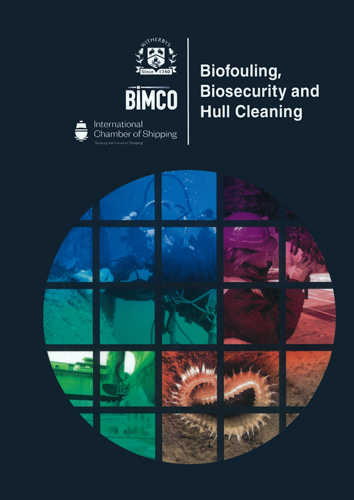Сб с 10 до 16
Biofouling, Biosecurity and Hull Cleaning
Мы не можем гарантировать его наличие и поступление на наш склад по указанной цене
Издание на английском языке.
The recommendations given in this book "Biofouling, Biosecurity and Hull Cleaning" have been developed using the best information currently available, they are intended solely as a guide for use by the user at his own risk. BIMCO, the International Chamber of Shipping (ICS) and Witherby Publishing Group assume no responsibility for the accuracy of any information or recommendations contained in the document, or for any omissions in the document, or for any consequences directly or indirectly arising from compliance with or acceptance of the recommendations contained in the document, even if they are caused by a failure. show once. This publication has been prepared to deal with the subject of Biofouling, Biosecurity and Hull Cleaning’. This should not however, be taken to mean that this publication deals comprehensively with all of the issues that will need to be addressed or even, where a particular issue is addressed, that this publication sets out the only definitive view for all situations.
Contents
Acknowledgements
PART 1 Background
Chapter 1 Background
1.1 What is Biofouling?
1.2 The Establishment of Biofouling
1.3 Microbiologically Influenced Corrosion (MIC)
1.4 Invasive Species
PART 2 Biofouling and the Ship
Chapter 2 Ship as a Carrier
2.1 Areas of Attachment on a Ship
2.2 Newbuild Design to Minimise Biofouling
2.3 Operational Profile and Maintenance of the Ship/Marine Structure
2.3.1 Type of Ship and its Charter Profile
2.3.2 Operating in Different Environments
2.4 Marine Structures/Devices
Chapter 3 Biofouling and Ship Performance
3.1 Effect of Biofouling on Ship Hydrodynamics and Energy Efficiency
3.1.1 IMO Guidance
3.1.2 ISO 19030
3.2 Biofouling Cost Effects
Chapter 4 Biofouling Biosecurity and Research
4.1 The Effects of Biofouling on the Marine Environment
4.2 The Effects of Biofouling Control and Removal on the Marine Environment
4.3 Environmental Research Initiatives
4.3.1 The GloFouling Partnership Project
4.3.2 The test Biofouling Project
4.3.3 The complete Project
4.3.4 The BioFREE Project
4.3.5 The OCEANIC Project
4.3.6 The Wave and Energy Project (WEP+)
4.3.7 The Flinders Biofilm Research and Innovation Consortium (BRIC) Project
4.3.8 The MultiFlex Project
4.3.9 HCR Project (a CORDIS Project)
4.3.10 Autonomous Biofouling Inspection Robots Research
Part 3 Biofouling Management
Chapter 5 Anti-fouling Systems (AFS)
5.1 Biocidal Paints and Coatings
5.1.1 Ablative or Soluble Matrix Coatings
5.1.2 Contact Leaching
5.1.3 Self-polishing Copolymer (SPC)
5.2 Non-Biocidal and Hybrid Anti-fouling Systems
5.2.1 Foul Release Coatings (FRC)
5.2.2 Hard Inert Coatings
5.3 Marine Growth Prevention Systems (MGPS)
5.3.1 Anodic Copper Systems
5.3.2 Electrochlorination
5.3.3 Direct Chemical Dosing
5.3.4 Ultrasound
5.4 Selecting an AFS
5.5 Proper Application of Anti-fouling Coating
5.5.1 Applying AFS to Specific Niche Areas
Chapter 6 Ship Cleaning
6.1 In-water Cleaning
6.1.1 Brush Systems
6.1.2 Soft Tools
6.1.3 Water Jet and Air Jet (Blast) Systems
6.1.4 AFS Resistance to Cleaning
6.1.5 Propeller Cleaning
6.1.6 Proactive In-water Cleaning
6.1.7 The Future of In-water Hull Cleaning (IWHC)
6.2 Cleaning/Maintenance in Dry Dock
6.2.1 Hydroblasting
6.2.2 Abrasive Blasting
6.3 Hull Cleaning and Ship Operations
Part 4 Legislation and Guidelines
Chapter 7 The 2011 Biofouling Guidelines
7.1 Design and Construction
7.2 Anti-fouling Systems (AFS)
7.3 Niche Areas
7.4 In-water Operations: Inspection, Cleaning and Maintenance
7.4.1 In-water Inspection
7.4.2 In-water Cleaning and Maintenance
7.5 The Biofouling Management Plan and Record Book
7.5.1 The Biofouling Management Plan
7.5.2 The Biofouling Record Book
7.6 Reviewing the 2011 Biofouling Guidelines
Chapter 8 Regulations for the Control of Anti-Fouling Systems
8.1 The International Convention on the Control of Harmful Anti-fouling Systems on Ships (AFS Convention)
8.2 UK Regulations
Chapter 9 National and Regional Biofouling Legislation
9.1 Australia
9.2 New Zealand
9.2.1 Acceptable Measures
9.2.2 Documentation
9.2.3 Non-compliance
9.3 United States of America
9.3.1 Federal Law
9.4 Individual US State Biofouling Requirements
9.4.1 California
9.4.2 Hawaii
9.4.3 Maine
9.4.4 Washington
9.5 Polar Waters
9.6 Belgium
9.7 Chile Appendices
Appendix 1 Template of a Biofouling Management Plan Courtesy of IMarEST and IPPIC
Appendix 2 Template Form for a Biofouling Record Book
Appendix 3 Data Sheets for Hull Cleaning Companies
Data Sheet Icons
Appendix 4 Ship Wetted Surface Area (WSA) Information
References




